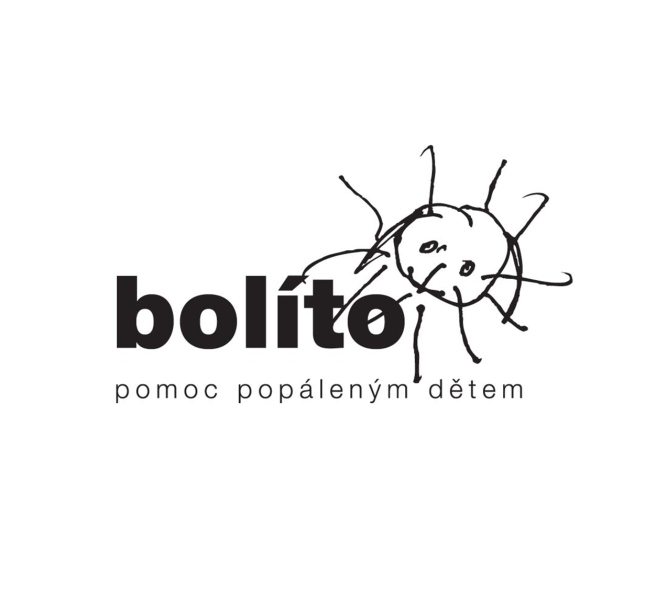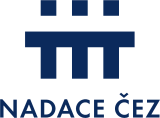Scientific facts
number of children out-patients treated every year in Czechia
are scalded toddlers
number of children admitted to a hospital per year between 2007 and 2018, which represents 44 % of all in-patients with burns (on average 2, 666)
of all injuries in patients under the age of 18 are burns
Source: ÚZIS 2020
Temperature of a flame
The temperature of a flame varies between 500 and 1, 500 degrees Celsius and can be estimated by the colour of the flame (use fingers to move the scale)



cherry red colour







Questions and answers
MUDr. Robert Zajíček, PhD., chief physician at the Burn Clinic of the Vinohrady University Hospital and the 3rd Faculty of Medicine of the Charles University in Prague.
How can I tell that a burn is deep?
There are two main categories of burns – deep burns and superficial burns. Superficial burns only damage the top layer of skin and are typically very painful. However, they can heal without intervention within approximately 14 days. First-degree and second-degree “A” (superficial) burns fall into this category.
First-degree burns only affect epidermis, the top layer of the skin. A typical example are sunburns. They cause a temporary skin redness. The second-degree “A” (superficial partial-thickness) burns typically cause blistering. The wound is pink as there is enough blood supply.
Deep burns affect deeper skin layers. We distinguish between second-degree “B” burns, causing partial damage of deep skin layers, and third-degree burns that damage all skin layers. These are always serious injuries that take more than three weeks to heal. A surgery is often needed and they almost always leave scars. The colour of the wound is a determining factor. A deep burn is typically white, red, brown, black or a combination thereof.
Second-degree “A” scalding. The wound is covered with blisters and its base is pink. The healing is usually complication-free and lasts around 2 weeks.
Second-degree “B” scalding affects deeper skin layers. The base of the wound is whitish, with small red dots. Second-degree “B” burns can heal spontaneously, but leave a scar.
Third-degree burns. The base of the wound is white, the skin is damaged throughout. These burns require surgery.
Source: Vinohrady University Hospital archives
Which parts of the body are the most risky if affected by burns?
The three critical body areas:
Face and neck – the main concerns include swelling, burn of respiratory tract and permanent effects.
Hands and feet – from wrists and ankles down. These parts are a concern for functional reasons, because they are key for our normal functioning in life.
The third area is genitals and gluteus, where the healing process is often complicated by infections.
The most critical parts of the body – face, neck, feet, hands, genitals.
How can you assess the size of a burn?
We estimate the size of a burn in percentage of the body surface affected by the burn. One way to estimate the size is the so-called rule of palm. The palm of the patient with fingers stretched out and the thumb held tightly with the other fingers correspond to approximately 1 % of the body surface. IMPORTANT – you need to use the hand of the victim not of the attending person!
The other method is the so called “rule of nines”. The different parts of the body correspond to approximately 9 % of the body surface, i.e. head and neck; chest; abdomen; upper half of the back; lower part of the back; arm; thigh; shank and foot. IMPORTANT – the rule of nines cannot be used on children! Another way is to use special diagrams into which you can draw the affected areas and calculate the size of the burn. In future, artificial intelligence will be used to calculate the size based on photographic scan.
The “rule of palm” – the patient’s hand with fingers tightly held together corresponds to around 1 % of the body surface.
We use a table and a sketch to estimate the affected area in relation to the age of the child.
Source: Guidelines in case of extraordinary circumstances with a large number of burnt people
How do we treat burns?
Patients with burns are treated in specialised burn centres. In Czechia, we have three such centres in Prague and in Brno and Ostrava, the regional capitals. Burns are complex injuries requiring interdisciplinary approach which means that specialists from different disciplines participate in the treatment. The reason is that burns have adverse effects on the whole patient and his or her organ systems.
Therefore, each patient needs a complex and intensive therapy. Surgical treatment is demanding, long and may lead to complications. Another important part of the treatment is nutrition, a prerequisite for successful healing, for instance. Serious burns may require long, sometime life-long physical therapy and re-education.
Photo from the operating theatre
Source: Vinohrady University Hospital archives
Do all burns leave a scar?
Superficial burns, i.e. first-degree and second-degree “A” burns heal by regeneration, which means without forming of scar tissue, usually within 14 days after the injury. Deep burns always heal through cicatrisation, which means scar tissue forming. Every skin scar is a very dynamic tissue, which can be worked with to achieve optimal functional and aesthetic results.
Scar treatment (rehabilitation) is done by specialists in burn centres. You can learn more about scars (in Czech language) in the book Jizva nejen v popáleninové medicine published in 2019.
At what temperature a stove, hot-plate or oven door can cause burns in children?
In the case of the so called “contact burns”, we talk about pain threshold, which is the temperature of the material that causes intense pain when in contact with human skin. Many experiments and studies indicate that the threshold is 43°C. However, materials differ in terms of the temperature required for the material to become hot enough to cause burns. For instance, stainless steel plates used for children’s slides or around swimming pools can reach up to 60-80°C in hot summer months and can cause serious burns if touched. A hot-plate of a standard cast-iron stove can reach up to 250°C.
Deep contact burn caused by hot metal on a child’s hand.
Time needed
to be burnt
by hot water

About us

The non-for-profit association “Bolíto” (standing for “It hurts”) provides assistance to child burn victims, mainly in terms of psychosocial support. It was founded in 2003 by Lenka Šetelíková, head nurse, and Robert Zajíček, chief physician, from the Burn Clinic at Vinohrady University Hospital in Prague. Five years ago, the photographer Jarmila Štuková joined the team; she is mainly involved in creating prevention and awareness-raising campaigns







